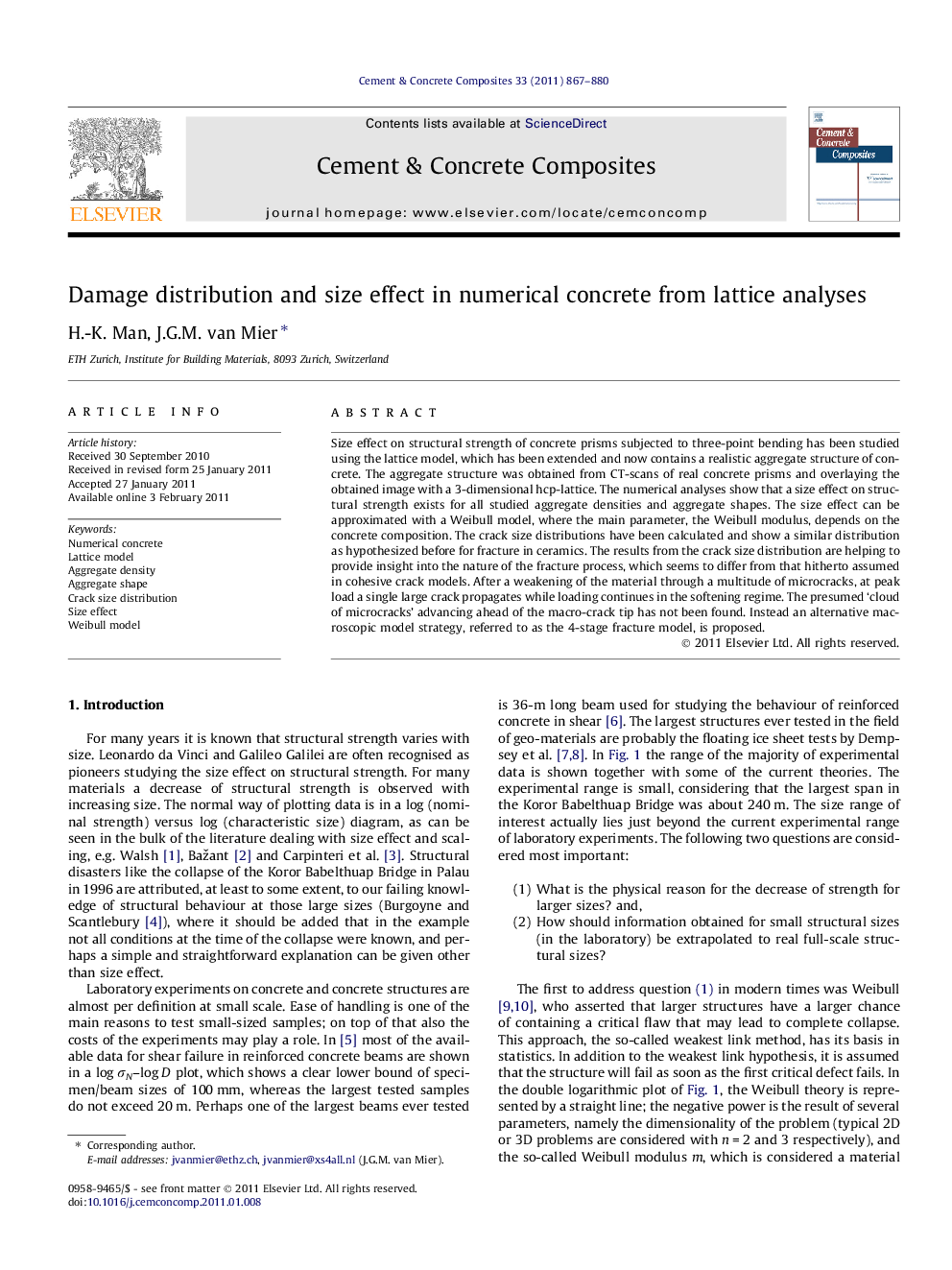| Article ID | Journal | Published Year | Pages | File Type |
|---|---|---|---|---|
| 1455154 | Cement and Concrete Composites | 2011 | 14 Pages |
Size effect on structural strength of concrete prisms subjected to three-point bending has been studied using the lattice model, which has been extended and now contains a realistic aggregate structure of concrete. The aggregate structure was obtained from CT-scans of real concrete prisms and overlaying the obtained image with a 3-dimensional hcp-lattice. The numerical analyses show that a size effect on structural strength exists for all studied aggregate densities and aggregate shapes. The size effect can be approximated with a Weibull model, where the main parameter, the Weibull modulus, depends on the concrete composition. The crack size distributions have been calculated and show a similar distribution as hypothesized before for fracture in ceramics. The results from the crack size distribution are helping to provide insight into the nature of the fracture process, which seems to differ from that hitherto assumed in cohesive crack models. After a weakening of the material through a multitude of microcracks, at peak load a single large crack propagates while loading continues in the softening regime. The presumed ‘cloud of microcracks’ advancing ahead of the macro-crack tip has not been found. Instead an alternative macroscopic model strategy, referred to as the 4-stage fracture model, is proposed.
